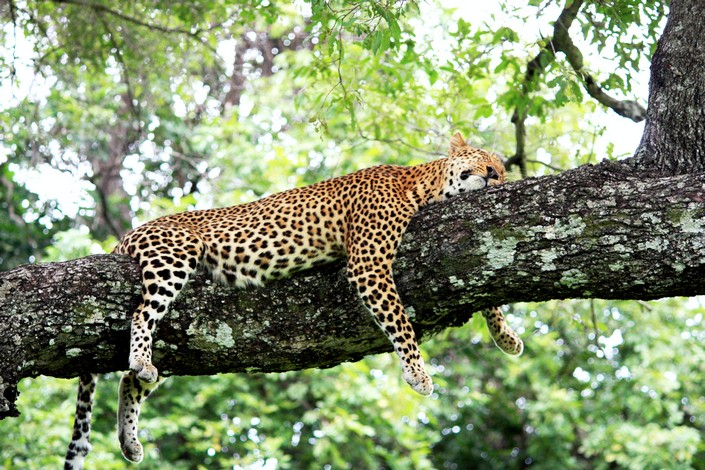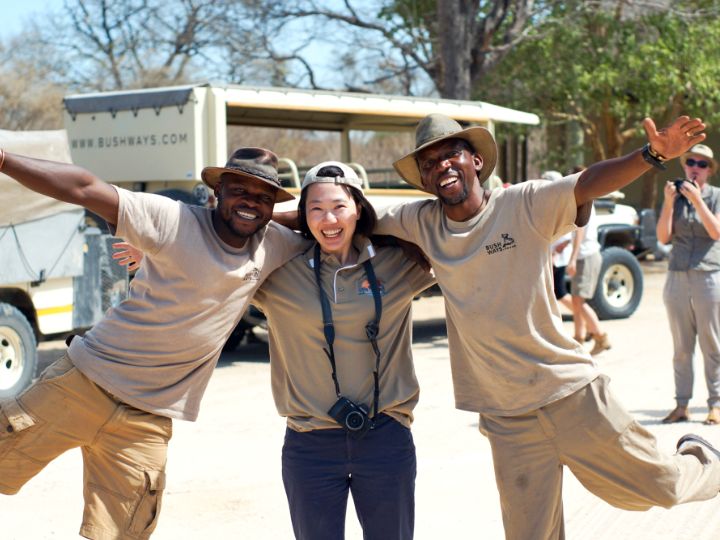I think we can all agree that life is about learning, exploring and broadening our horizons. Life is about creating memories, experiencing the unknown and being proactive. With so many once-in-a-lifetime experiences and extraordinary encounters, we can say for sure that Africa certainly gives one the opportunity to spread their wings, broaden their perspectives and live life to the fullest.
One of the most special encounters to be found on the continent is that of the Mountain Gorilla Trek. This tour is special because visitors are able to walk to/with the mountain gorilla colony. These beasts of the wild; though overwhelmingly sized, are gentle and welcoming to their human counterparts, giving visitors that feeling of ‘oneness’ with their environment as they are not confined to a van when visiting these majestic creatures.
The gorilla trek is an experience unlike any other – and whether you’re planning to do the trek or not, it’s important that you’re informed and understand what the tour entails. This post will cover all your basic questions and concerns about the gorilla trek – and may just solidify your decision to embark on this incredible journey!

Where does one find the mountain gorillas?
The world’s greatest population of mountain gorillas can be found in Uganda and Rwanda. In Uganda, national parks such as Bwindi National Park, Virunga Mountains (situated on the border of Uganda and Rwanda), Murchison Falls and Mgahinga National Park are home to small populations of mountain gorillas. The most popular of the national parks is that of Bwindi; which has almost half of the world’s gorilla population living in the park. With only around 880 mountain gorillas left in the world, Bwindi is estimated to home around 330 of them.
Visit Bwindi National Park in Uganda on our budget Gorilla Trekking Tour!
Bwindi National Park is a forest full of life, with a vast number of bird species, insects and plants, as well as forest elephants, various primates and bushbucks to name a few. It has become a huge conservational focus, with conservationists relying heavily on tourism to fund the maintenance of the park and the protection of the life found in the region.

How long is the trek?
The gorilla trek is fairly ‘strenuous’ and is not recommended for the weak traveller. In order to get to the gorilla colony, one would need to walk for a few hours – sometimes up to four hours before catching a glimpse of a mountain gorilla. The walk isn’t difficult, but it can be tiring for those who are not used to hiking in semi-challenging, mountainous terrain.
When is the best time to go gorilla trekking?
The gorilla trek is a year-round excursion, although many visitors prefer visiting in the peak months of December to February as there’s less rain – although it’s a lot warmer. December is said to be the busiest time of year, making it more difficult to secure a permit (only 30 are granted per day by the park). June, July and August are also said to be great months to embark on a gorilla trek as these months are known to be fairly dry with only partially cloudy conditions or odd showers usually predicted.
Uganda has two rainy/wet seasons (low seasons), which are from March to May, and mid-September to November. Although rain is inevitable, it doesn’t last for hours on end. Some say the rains come for a few minutes, and the sun shines brightly after it passes. The low season is also said to be a lot quieter, making it easier to secure a permit, and it’s also said to be cheaper during these months.
Is it safe?
Gorilla trekking is extremely safe. Each group is accompanied by a highly experienced guide who has a wealth of knowledge about the park, as well as the gorillas and their behaviour. These guides have been carefully selected by the national park to safely guide tourists – and most have been doing it for a great number of years.
We recommend the following safety instructions when on the trek; however, it’s imperative you first adhere to the instructions from your guide, regardless of what you’ve read/heard:
- Don’t touch the gorillas
- Keep a safe distance of around 7 metres
- Try not to make direct eye contact with the gorillas
- Be quiet and don’t make any sudden movements
What to pack for a Gorilla Trek
Firstly, we’d advise you don’t pack bright coloured clothing. Neutral/dull colours are preferred, as bright colours can threaten or perturb the gorillas.
Pack:
- A rain jacket
- Waterproof hiking shoes – preferably shoes with good ankle support
- Long trousers – preferably waterproof
- A Long-sleeved shirt
- A sun hat
- Sunscreen
- Insect repellent
- A water bottle
Discover the extraordinary in Uganda with African Overland Tours!






0 Comments